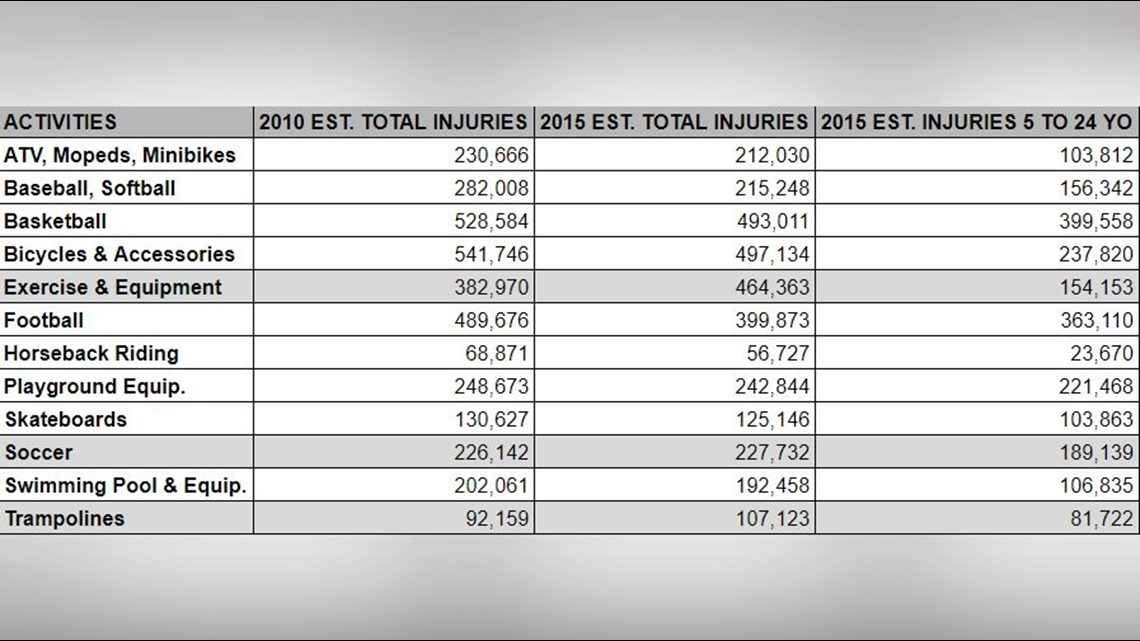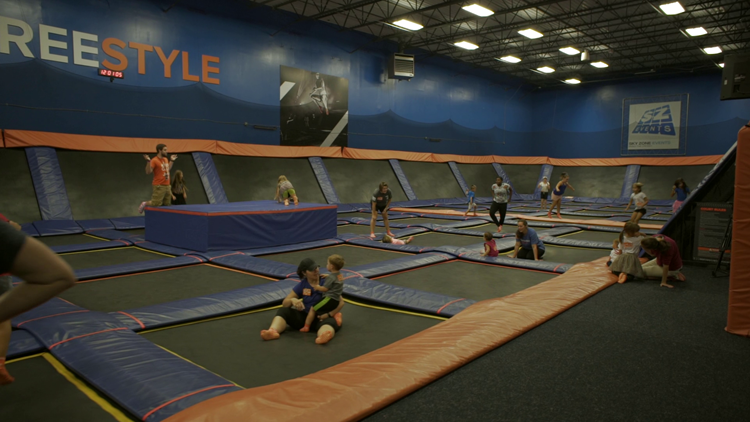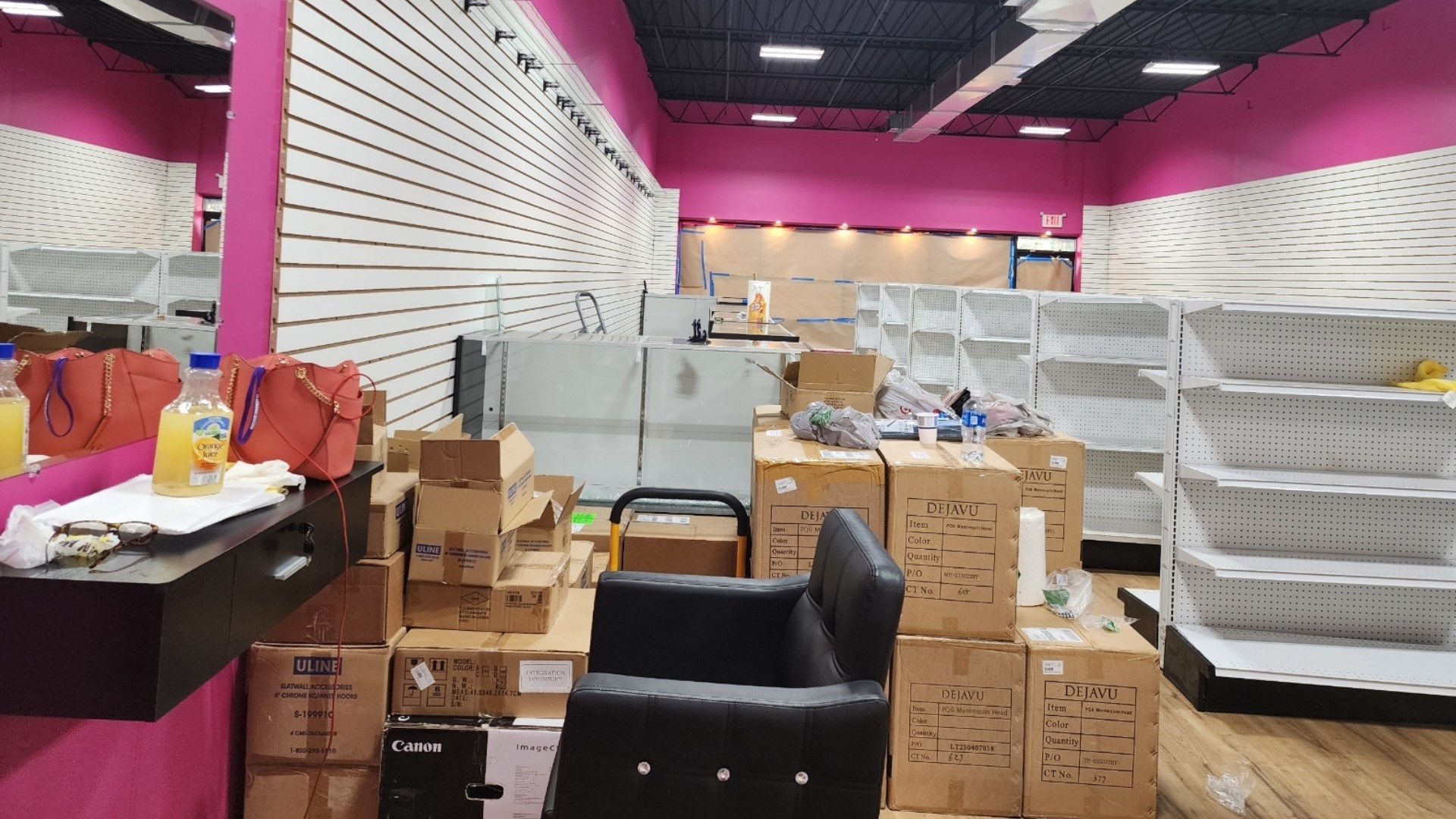Which trampoline park was your favorite when you were a kid? Chances are, you didn’t have one. Because until 2011, they didn’t exist. At least not in metro Atlanta.
The industry openly admits, jumping can lead to injuries. They even have parents and jumpers sign waivers before buying their tickets, warning that the activity could cause serious injury – even death.
Despite the potential risk, 11Alive investigator Rebecca Lindstrom learned there are no state inspections to make sure trampoline parks are doing their part to keep you safe. There aren’t even regulations on how the facilities are constructed or maintained.
Ian Solter’s family would like to change that.
“It was like snap, but more meaty,” explained Solter remembering the sound he heard as his leg broke. Solter says he was jumping onto a trampoline on the ninja course at Get Air in Johns Creek.
Ian’s a jovial kid who talks easily about his 2016 injury and the three surgeries he’s needed so far. But ask how he “feels” when he looks at the scars and you’ll get silence as he fights the tears.
His mom can’t help but get emotional as well when she thinks about the past year.
“To see your child in pain... He’s lost time, his life, he’s lost events he’ll never get back," explains Charmain Solter. 'He has nightmares, the pain, screaming at night.”
According to injury data collected by the Consumer Product and Safety Commission, accidents at trampoline parks nationwide are soaring alongside the industry’s growth.
While the CPSC says most injuries occur in backyard trampolines, an estimated 99,988 last year, it’s believed 20,999 injuries occurred at trampoline parks. That estimate is up from 2,970 just five years earlier.
The industry is quick to point out, more children head to the hospital with injuries from basketball, baseball and football than from jumping on a trampoline, and according to the CPSC, they’re right.
In 2015, injury data shows approximately 156,342 people ages 5-24 were injured playing baseball or softball, 399,558 people were injured playing basketball and 363,110 were injured playing football. But those numbers are down from five years ago.


Former state Rep. Ronnie Mabra says that’s likely due to an increased focus in safety for those sports. He says it’s time we did the same for trampolines.
“I saw a news story about a youth football coach, and anyone growing up here in the south knows football is king here,” Mabra says.
That football coach, Jonathan Magwood, jumped into a foam pit and hit the bottom. The injury left him a quadriplegic. While researching his case, Mabra learned the industry had no regulatory oversight.
“When I did my research I was like whoa, nobody has touched this issue,” Mabra says.
According to data, only three states require annual inspections and liability insurance to operate: Arizona, Michigan and Colorado. Three other states are debating legislation right now. But the bill in Georgia never made it to the floor for a vote.


David VanVurst is the owner of Sky Zone in Kennesaw and a founding member of the International Association of Trampoline Parks (IATP). He says he’s surprised more states have not regulated the industry.
“Absolutely, I’m shocked that they haven’t,” VanVurst tells 11Alive.
The IATP helps research and set safety standards, but right now in Georgia those rules are voluntary. The guidelines cover everything from park construction to safety briefings and maintenance.
VanVurst says there should be an industry standard, and he’s open to annual inspections if it means making the industry safer for everyone.
Trampoline parks can join the IATP, and at its upcoming trade show it will be asking members to sign a pledge promising, among other things, to carry general liability insurance, post rules that are easy to see and understand, a trained court monitor for every 32 jumpers. It also specifies rules on the construction of foam and bag pits, along with padding lead in and out of the trampoline courts.
WEB EXTRA | What is double jumping, and why is it bad? (Coming soon)
They sound like basic and common sense suggestions, but the IATP says not every park is doing them.
That’s why the Solters say they’ve filed a lawsuit. They say without state regulation, the courts are their only avenue for accountability.
The Solter’s attorneys say they’ve found proof on social media the ninja course keeps changing. Two years ago, there were foam pieces to protect children from hitting the frame of the trampoline. But attorney Chris Stewart says it looked different the day Ian jumped.
“That safety mattress has been pulled all the way back exposing the hard lining guard rail, and there’s no foam pieces what so ever,” attorney Chris Stewart says, holding a picture of Get Air’s ninja course in Johns Creek.
And the day Lindstrom visited to check out the course, there was foam covering the safety mat, but it was still pulled back. It’s unclear which version, if any, is safer. But the Solters say there should be a standard.
“If this becomes more publicized and the community and the public become more aware of what’s going on here, maybe that will be enough pressure to the legislators to require them to make some changes here.”
Lindstrom tried several times to contact Get Air Suwanee Parks, which manages the park in Johns Creek. On Friday, attorney Tony Jones sent a statement saying, "We are investigating this matter and the allegations made. The civil lawsuit is ongoing, and we cannot discuss that matter at this time." Further, in its motion to dismiss the claim, Get Air argues it did nothing wrong and that Ian’s broken leg was caused his “own negligence.”



